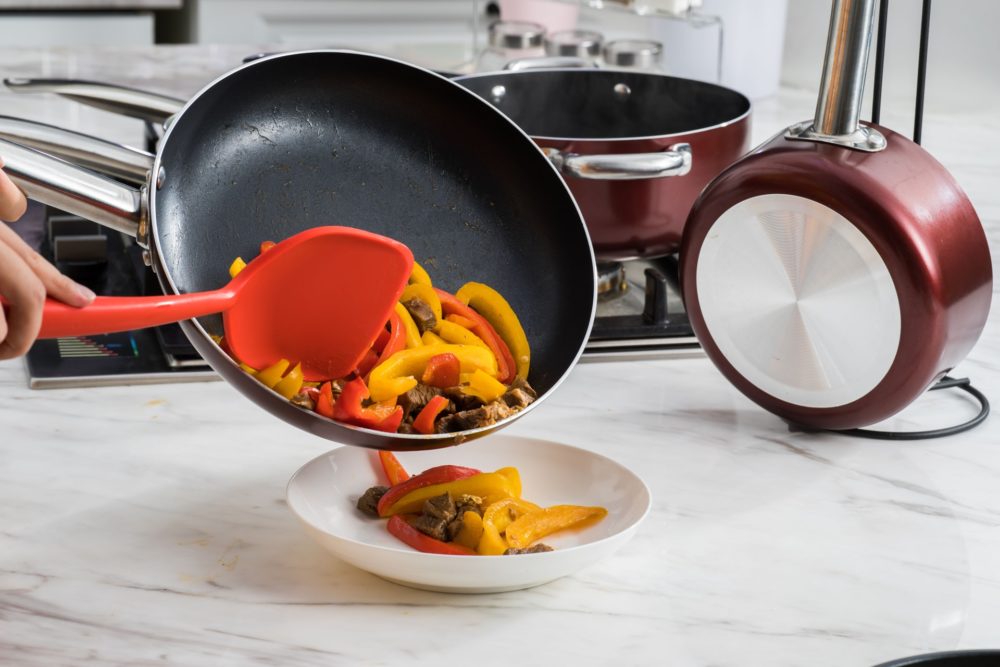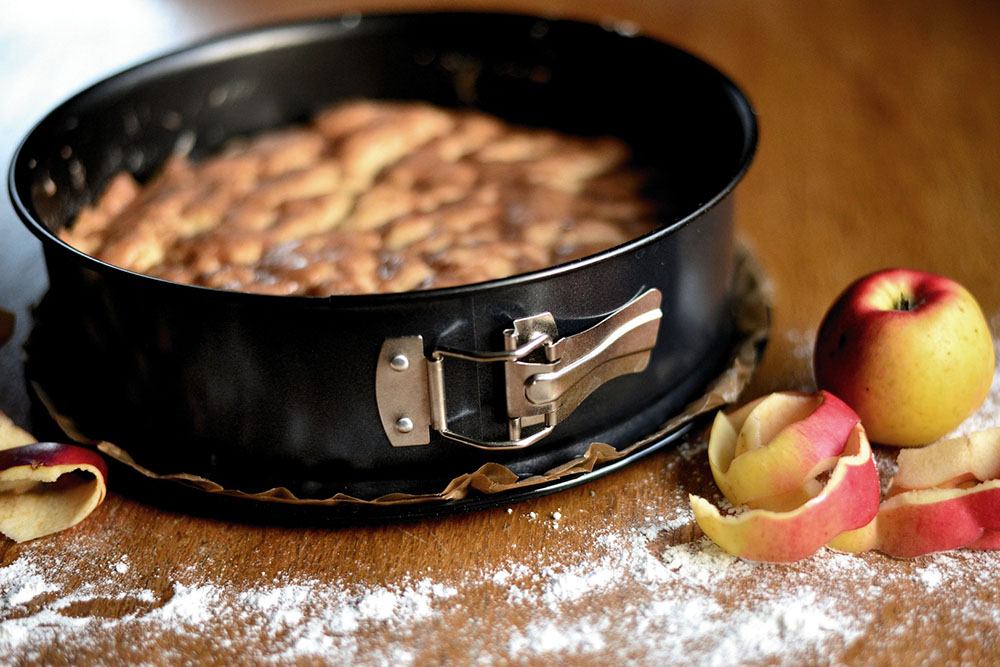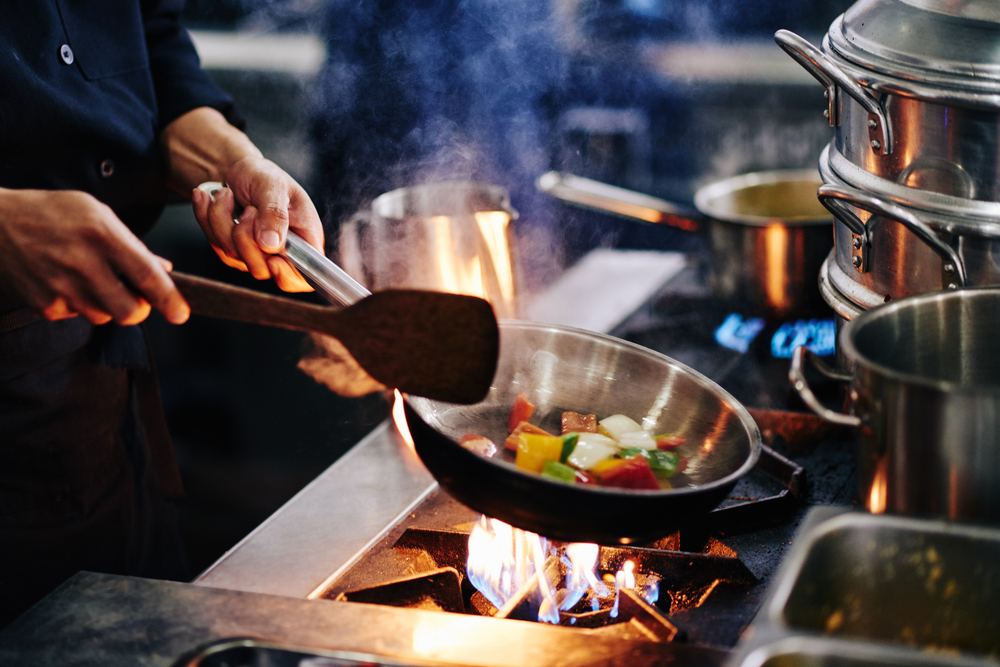Everyone should own a few oven-safe pans because baking your food is almost always healthier and more nutritious than frying it.
Frying food, whether you’re deep or shallow frying, requires a lot of calorific oil to keep the pan lubricated and your food cooking evenly.
Baking, on the other hand, requires little to no oil. Rather than heat reaching the food from one incredibly oily direction, it’s hit from all angles.
But not all pans are particularly suited for oven use, and with all the controversy of Teflon-coated pans and their toxicity at high temperatures, it’s good to do a bit of research before reducing your fry time.
So, Are Non-Stick Pans Oven-Safe?
Generally speaking, yes, you can definitely put non-stick pans in the oven.
Whether they’re Teflon, ceramic, or just seasoned to perfection, they’re safe to go straight from hob to oven for some delicious post-sear roasting.
But Just Because You Can, Doesn’t mean You Should
Slow down there though, Chef. before you start loading old reliable up with all your favorite pans, there are some rules to understand.
Most importantly of all, you need to know what each pan’s maximum temperature capacity is.
A maximum temperature capacity is the hottest the pan can get before bad stuff starts to happen. If it’s a Teflon pan, the PTFE starts to break down, releasing toxic fumes into the air.
If it’s a non-toxic ceramic pan, the non-stick coating will start to dissipate. If it’s a seasoned pan, you’ll carbonize the protective layer.
If you don’t know your pan’s heat capacity, and you can’t find the manual, try searching online for information or even contacting the manufacturers.
Never try to guess this temperature as it can range from 300 degrees Fahrenheit to over 800 degrees Fahrenheit from pan to pan.
If you’re absolutely, 100%, no turning back, dedicated to putting a non-stick pan in the oven, I highly recommend using high-temperature capacity, non-toxic ceramics, and only ever within its safe temperature range.
However, if you do breach their temp capacity by accident, the coating will begin breaking down, but it won’t release any toxic fumes whatsoever, perfect!
Some trustworthy companies flying the non-toxic flag at the minute are Green Pan, Caraway, Extrema, and Made By.
Handle Awareness
Another thing you have to be wary of is handles. It seems silly to say, but lots of eager cooks forget to pay mind to handle material before throwing their lunch into the oven in their frying pan.
The good news is that even plastic handles are normally made to withstand incredibly high temperatures, but there’s a limit. Once you’re beyond the 200 degrees Fahrenheit zone, standard plastics will start to warp and melt.
Specialized plastic handles may survive up to 350 degrees Fahrenheit, but only ever try this if it’s stated as fact from the manufacturer.
If you’re able to, you could always play it safe and remove a plastic handle from a pan before placing it in the oven, but man...what a lot of effort. At this point, you might as well have just transported your food to a baking tray and basted it with the juices from the pan.
Are You Better Off Using Standard Pans For the Old Switcheroo?
The short answer is, yes. Non-stick pans are fantastic on the hob, and even though manufacturers claim they’re perfectly fine to use in the oven, if you really want to make that magical coating last, keep them out of there.
Some might argue that you’re actually more in control of temperature when your non-stick pans are in the oven than you are when they’re on the hob, which is true.
On the oven, you have a temperature dial, whereas with the burners, you can only go off the size of the flame and the reaction of the contents of the pan.
That said, the average burner reaches temperatures of approximately 195 degrees Fahrenheit, far below most non-stick pan’s capacity.
Ovens, on the other hand, can reach temperatures of up to 500 degrees Fahrenheit, far beyond the average threshold of a non-stick pan, and remember, Teflon releases toxic fumes at that temperature.
What Should You Use Instead?
If you don’t fancy risking putting your expensive slippy pans into the convection inferno that is your oven, good choice.
Keep them safe as possible so you can enjoy flipping pancakes and crisping fish skin with ease. It’s a smart decision, and not just in a play-it-safe kind of way.
It’s smart because there are a number of other oven-friendly pans about.
Ceramic
Non-toxic ceramic pans use sand-derived coatings surrounding a metal core.
Once their non-stick qualities (a gel glaze) have naturally elapsed, you’re free to use them in the oven at any temperature.
Aluminum
As long as they’re anodized, aluminum pans are great for baking at high temperatures. They’re awesome conductors of heat and distribute it nice and evenly across their whole surface.
You can do a little preliminary searing in one, then throw it in the oven for however long you need. As long as you use minimal amounts of high smoke point oil, you’re eating healthy, my friend.
Cast Iron
Cast iron pans are generally considered to be one of the absolute best stove to oven pans because they’re made up of purely one metal and rarely ever have plastic or wooden handles.
Cast iron pans are also famous for their browning and searing capabilities, which means they’re perfect for starting things off on a burner, then retiring for a spell for a rest in the oven.
But before you stock up on loads of expensive and heavy cast iron kitchenware, you should know that though they may be rugged and durable, they need loads of love too.
You should never use metal scourers to clean them, nor should you use soapy water. Let them cool until warm, remove food debris with paper towels or a dishcloth, rinse them under hot running water and dab clean with a non-abrasive sponge or cloth.
If you need a bit of extra oomph to get rid of stubborn debris, try mixing a little bit of coarse kosher salt to the pan before wetting it and spread it around with paper towels.
Copper
Copper pans are the best conductors of heat, making them great for baking; however, they’re very reactive and soft, so you should never cook acidic foods such as tomatoes in them.
They’re also the most expensive pan on the market.
Stainless Steel
You can use stainless steel in the oven, but it’s not the best due to its poor conductivity.
Before You Go
So, can you use non-stick pans in the oven? Yes, as long as you’re very careful and pay attention to recommendations from the manufacturer. Should you avoid putting them in the oven?
Unless it’s a non-toxic ceramic pan, yes. With a wealth of other awesome oven-safe pans out there, it’s a good idea to save your special non-stick pans for tricky fried foods.






